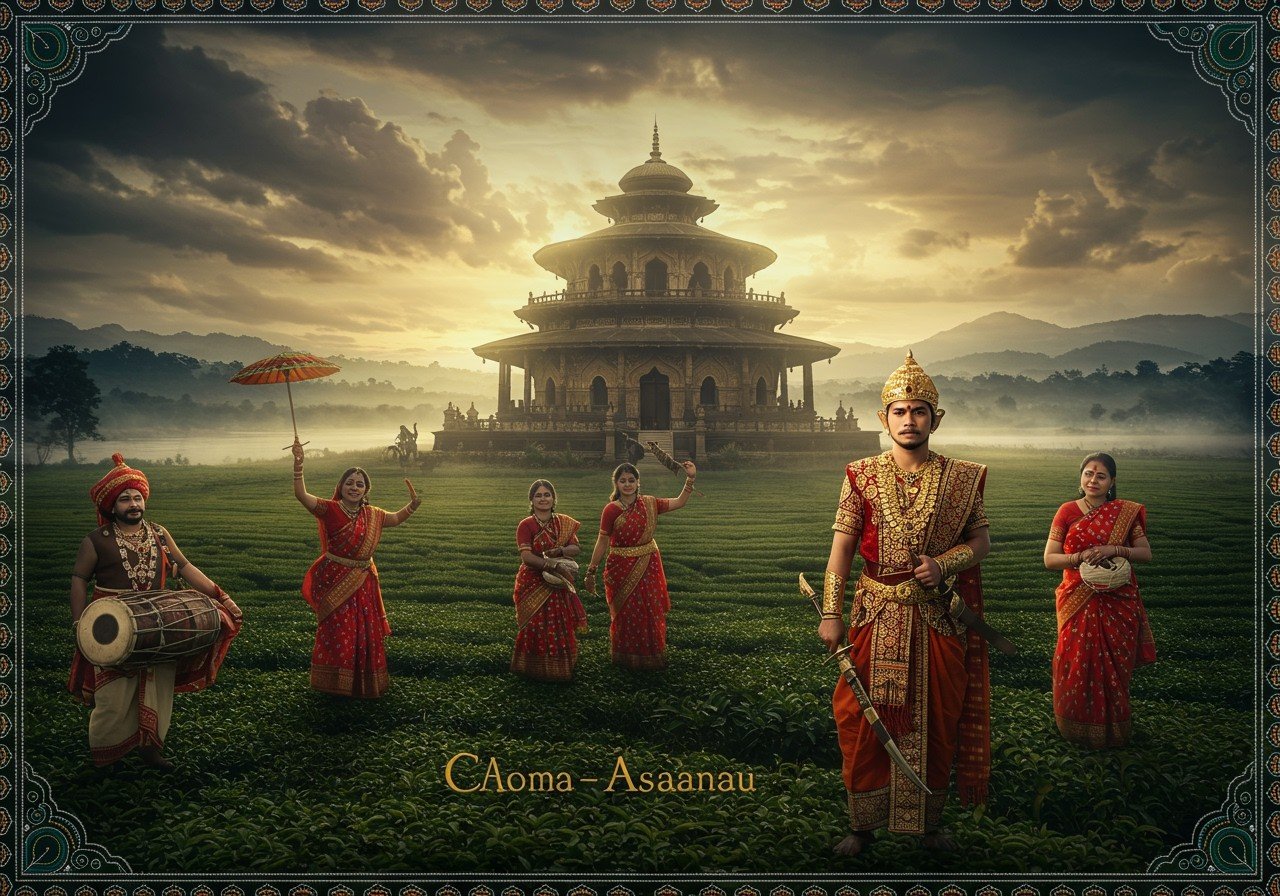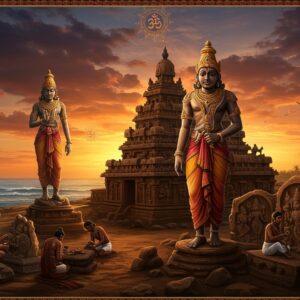
The Ahom Kingdom, established in 1228 by Sukaphaa, a Tai prince from Möng Mao (present-day Yunnan Province, China), was a powerful dynasty that ruled the Brahmaputra Valley in present-day Assam for nearly 600 years. This remarkable kingdom, lasting until the Burmese invasion and subsequent British annexation in 1826, significantly shaped Assam’s history, culture, and legacy. The Ahom community still thrives in Assam today, their history marked by substantial contributions to the region, although their original language is now extinct.
Foundation and Expansion
Sukaphaa’s arrival in 1228 marked the beginning of the Ahom kingdom. He strategically integrated local tribes, building alliances and expanding his territory through both diplomacy and military campaigns. His integration policies laid the groundwork for a long and prosperous reign.
Key milestones in the kingdom’s expansion include:
- Strategic Battles: Sukaphaa and subsequent rulers engaged in numerous battles to secure and expand their territories, demonstrating military prowess and strategic thinking. These victories were crucial for the kingdom’s growth and dominance in the region.
- Alliances with Indigenous Groups: Forming alliances with various indigenous groups was a cornerstone of Ahom expansion. These alliances not only strengthened their military power but also fostered cultural exchange and integration within the kingdom.
- The Paik System: The introduction of the Paik system, a unique form of administration where every adult male rendered service to the state, ensured efficient governance and resource management, contributing to the kingdom’s stability and prosperity.
Ahom Dynasty Rulers and Their Contributions
Several notable rulers shaped the trajectory of the Ahom Kingdom. Kings like Sukaphaa, Rudra Singha, and Gadadhar Singha made significant contributions to its growth and development.
- Sukaphaa (1228-1268): The founder of the Ahom Kingdom, Sukaphaa, is renowned for his diplomacy and integration policies, which laid the foundation for a unified and powerful kingdom. His vision and leadership were instrumental in establishing the Ahom dynasty’s long reign.
- Rudra Singha (1696-1714): Rudra Singha oversaw significant expansion of the kingdom and initiated important architectural projects like the Rang Ghar, a two-story amphitheater used for watching sports. His reign is considered a golden age for Ahom architecture and cultural development.
- Gadadhar Singha (1681-1696): Gadadhar Singha focused on strengthening the kingdom’s military and administrative structures, consolidating its power and ensuring internal stability. His reforms contributed to the kingdom’s resilience and its ability to withstand external threats.
Cultural and Social Developments
The Ahom Kingdom significantly enriched Assam’s cultural heritage. Royal patronage led to advancements in language, literature, art, and architecture, creating a unique blend of indigenous and Ahom traditions.
- Assamese Language and Literature: The Ahom period saw significant development of the Assamese language and literature. Royal patronage encouraged literary works and historical chronicles, preserving the kingdom’s history and cultural expressions for future generations.
- Architecture: The Ahoms left behind impressive architectural marvels like the Rang Ghar, a unique amphitheater, and Talatal Ghar, a multi-storied palace known for its intricate design and strategic significance. These structures stand as testaments to the kingdom’s architectural ingenuity.
- Festivals, Customs, and Traditions: Ahom rule significantly influenced local festivals, customs, and traditions, creating a rich cultural tapestry that continues to define Assamese identity today. The integration of indigenous practices with Ahom customs resulted in a unique cultural blend.
For those seeking to connect with Assamese traditions, poojn.in offers a wide selection of items for rituals and ceremonies, from traditional bell-metal items to pure copper utensils. You can find everything you need to observe Assamese cultural practices with authenticity and reverence.
Religious Practices and Beliefs
Religion played a vital role in the Ahom Kingdom. While the kings patronized Hinduism, including Vaishnavism and Shaktism, they also respected and maintained indigenous faiths, fostering religious tolerance and diversity.
- Hinduism and Indigenous Faiths: The Ahom kings skillfully balanced their support for Hinduism with the existing indigenous belief systems, creating a unique religious landscape in the kingdom. This approach promoted harmony and cultural integration within their diverse realm. Explore a range of puja items related to various Hindu traditions at poojn.in.
- Ancestor Worship: Ancestor worship was a significant practice in the Ahom Kingdom, reflecting a deep reverence for their lineage and history. This tradition highlighted the importance of family and continuity within their society.
- Deodhais (Priests): The Deodhais, or priests, held an important position in Ahom society, performing rituals and guiding religious practices. They played a crucial role in maintaining the spiritual and cultural fabric of the kingdom. Poojn.in provides essential items for priests and religious ceremonies, ensuring authenticity and quality.
Economic and Trade Developments
The Ahom economy thrived on agriculture, particularly rice cultivation. The kingdom established trade routes, fostering commerce with neighboring regions, while the flourishing silk industry contributed significantly to regional handicrafts.
Military Strategies and Conflicts
The Ahom Kingdom faced numerous conflicts, demonstrating remarkable military prowess and strategic brilliance. Their effective use of guerrilla warfare tactics, particularly in the Battle of Saraighat against the Mughals, played a crucial role in defending their territory.
Legacy and Modern Influence
The Ahom Kingdom’s legacy continues to resonate in modern Assam, influencing traditions, festivals, and historical narratives. Ongoing efforts to preserve Ahom heritage sites underscore their lasting significance in Assam’s cultural landscape.
Conclusion
The Ahom Kingdom stands as a testament to resilience, cultural richness, and strategic brilliance. Its 600-year reign profoundly impacted Assam, leaving an enduring legacy that continues to shape the region’s identity.
Dhekiakhowa Bornamghar: Exploring Assamese Spiritual Heritage
Assam’s Sacred Sites: Ugratara Devalaya and Other Spiritual Journeys
South Dinajpur Special Maa Kali Mukho Printed Bamboo Kulo


